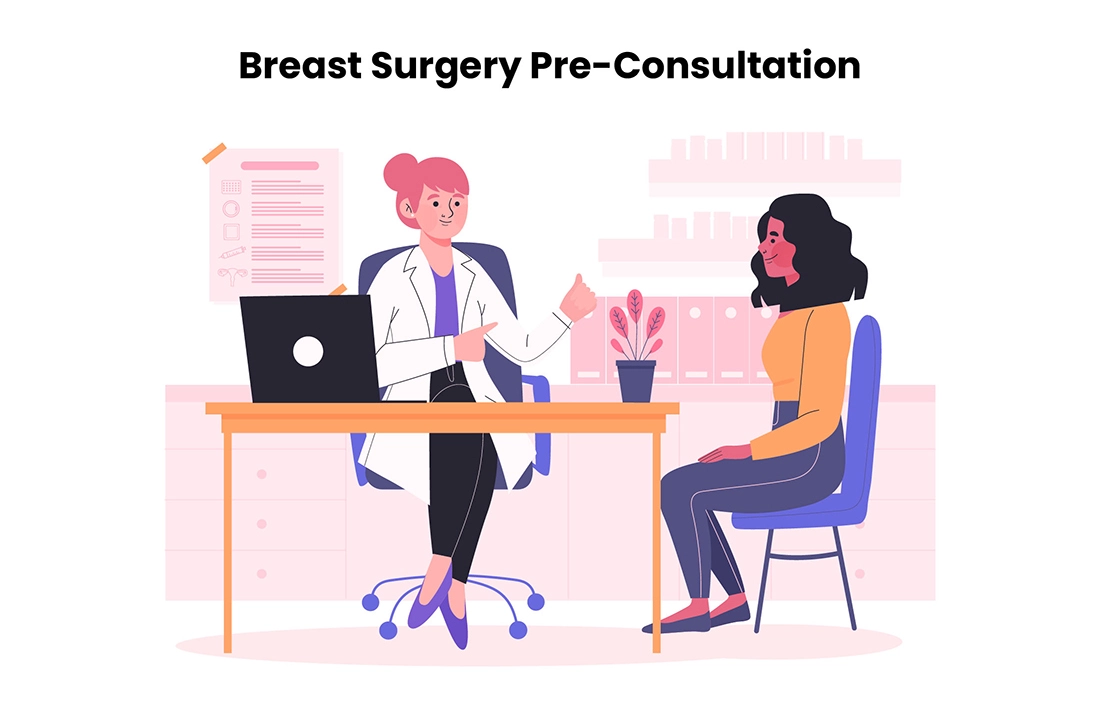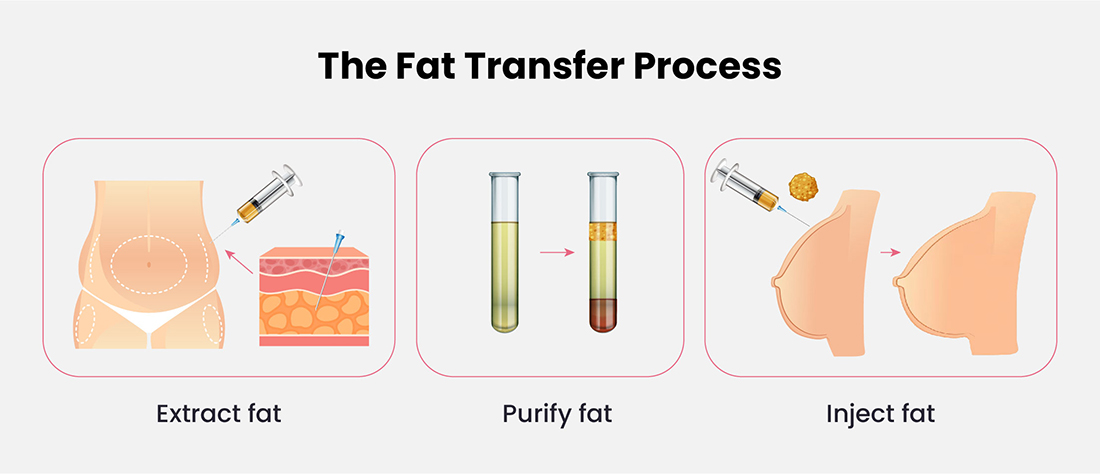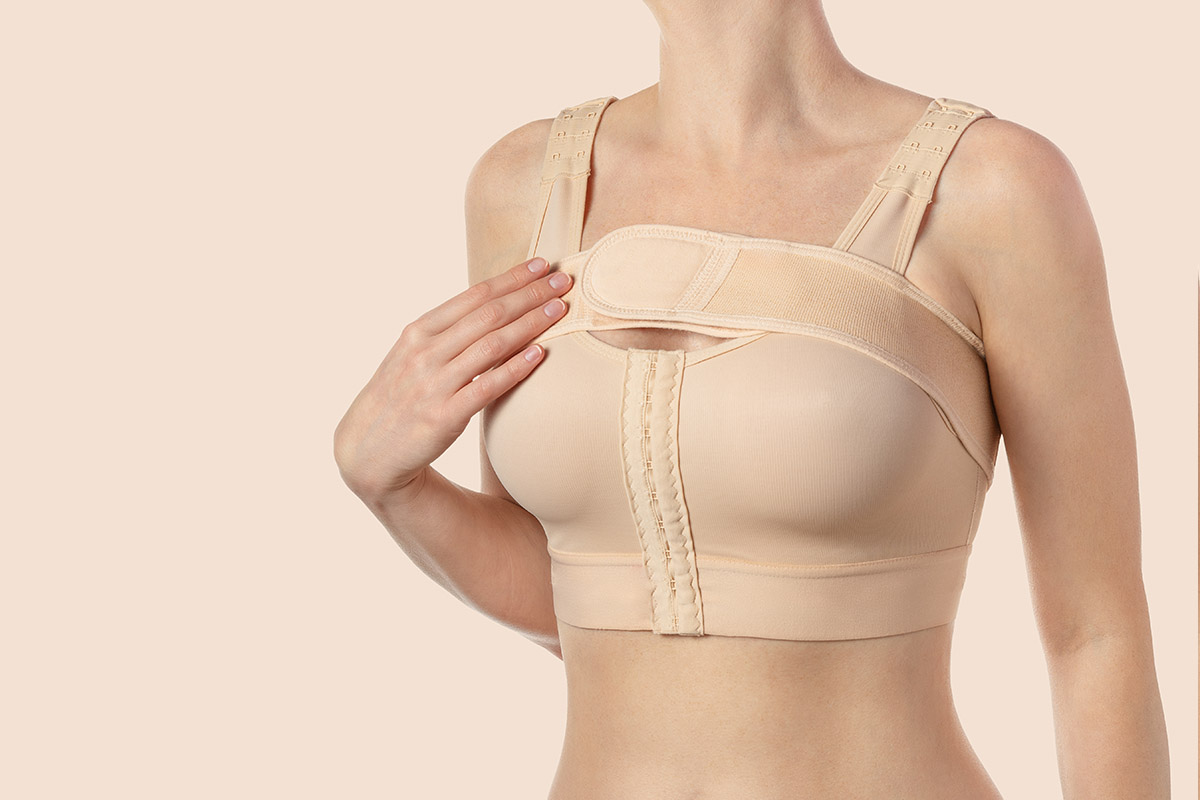Fact: Breast augmentation with implants is one of the most popular types of breast surgery in the UK.
Also fact: Many women would love a more natural method to get a fuller bust.
Here’s where it gets interesting: Alternatives to implants now exist, and you now have the option to consider a more natural breast augmentation.
Using fat transfer.
Going Au Naturel… with Breast Augmentation
In our experience working with cosmetic surgery patients, we have noticed that many women who come in seeking the aesthetic goals that a breast augmentation can offer are worried at the thought of getting implants in their body. Others often want a natural look similar to an uplift but coupled with enhancement.
We’ve also seen patients who are ready to go with a traditional augmentation with implants but are put off by the prospect of coming in for an implant replacement in a few years.
In all these cases, we typically recommend a fat transfer breast augmentation.
Fat Transfer for Breast Augmentation: What exactly Is It?
A fat transfer breast augmentation is a cosmetic procedure where your surgeon will transfer fat from areas with existing fat deposits, to your breasts to enhance their volume and shape.
With both liposuction and breast surgery taking place in one go, you get a more natural breast enhancement coupled with more proportionate contours.
The British Association of Aesthetic Plastic Surgeons (BAAPS) highlights a significant rise in fat transfer procedures, reflecting the growing demand for natural and minimally invasive cosmetic solutions.
(Aesthetic Medicine).
Creating Curves: The Fat Transfer Process
This trend aligns with a broader post-pandemic trend where patients seek natural enhancements like fat transfer over synthetic implants due to lower risks and more sustainable, body-positive results.
Here’s how the breast augmentation fat transfer procedure takes place:

STAGE 1: Pre-Surgery Consultation and Evaluation
As with any breast surgery, the first step is booking a consultation with the surgeon to discuss your goals. During this stage, your surgeon would discuss your aesthetic goals, overall health, current lifestyle choices, and preparedness for surgery, and of course, determine whether you have sufficient fat deposits for the procedure.
The ideal patient profile would be someone with a healthy BMI, yet with enough body fat to make a fat transfer surgery viable.
If all goes well and you are a good fit for a breast augmentation with fat transfer, then your patient advisor and nurse will work with you to complete all the pre-op paperwork and blood work and get you ready for surgery.

STAGE 2: Fat Harvesting via Liposuction
On procedure day, you may be asked to come in a bit early to complete any final paperwork and get introduced to your surgeon and anaesthetist. Once the surgery gets underway, the surgeon gets started on the first stage – liposuction.
At this stage, the surgeon will harvest fat cells from areas where you have an excess, possibly your midsection or your thighs. Advanced liposuction techniques, such as tumescent or VASER liposuction, are often used to ensure minimal damage to the fat cells and surrounding tissues.
STAGE 3: Purifying the Fat for Injection
Once extracted, the fat undergoes a purification process. This involves separating the fat cells from other fluids and tissues, often using a centrifugation process or filtration. The purified fat is then carefully prepared for injection into the existing fat deposits within your breasts.
STAGE 4: Precise Fat Injection for Natural Contouring
In the final stage of the procedure, your surgeon would strategically inject the purified fat in multiple layers and locations within the breast tissue to get the enhanced proportions you’re looking for and to ensure an even distribution and optimal integration of the grafted fat cells. This meticulous process is vital to achieving a smooth, natural-looking result.
Benefits of Fat Transfer Breast Augmentation
Overall cosmetic surgeries saw a 102% increase in 2022, with liposuction—often used to harvest fat for transfer—rising 134%. Here are some of the critical reasons why more and more women are opting for fat transfer breast augmentation over implants.
- Natural look and feel: A fat transfer to the breasts usually translates into a more natural feeling enhanced breast. Since the procedure injects fat cells into your breasts, your breasts maintain their usual softness and natural movement, and do not feel firm as it can sometimes feel with implants.
- Personalised results: Fat transfer allows for highly customised outcomes, enabling your surgeon to sculpt your breasts according to your aesthetic goals. This flexibility is especially helpful for correcting asymmetry and providing a subtle enhancement that is impossible with traditional implants.
- No foreign objects: If you’re concerned about introducing foreign objects into your body, you can rest easy with a fat transfer breast augmentation. This procedure eliminates the need for silicone or saline implants. And while most women who get implants do not end up with complications such as implant rupture or capsular contracture, a fat transfer eliminates this risk entirely.
- Twin benefits: Your twins, and your midsection, are going to appreciate this: Not only does this procedure enhance the breasts, but it also contours the donor area, providing a slimmer, more sculpted figure. Don’t we all love it when a single surgery can address multiple aesthetic concerns simultaneously?
Faster Recovery: While you will be expected to take one to two weeks off, just as is expected in the case of a traditional implant, recovery from a fat transfer breast augmentation is often quicker and less painful. The British Association of Plastic, Reconstructive, and Aesthetic Surgeons (BAPRAS) reported that most patients experience mild swelling and bruising that soon subside. Since there are no large incisions and scarring is minimal, you may be able return to your routine within a few days.
- Cost-effective option: Granted the cost of a fat transfer breast augmentation may be higher than getting implants, but you’d also have to consider the long-term benefits that make this a cost-effective option. For instance, getting an augmentation without implants means that you don’t need to book an implant replacement surgery after a few years. The other benefit is that the procedure requires a shorter recovery period, leading to less downtime and fewer vacation days lost, while also providing you the liposuction contour advantage.
Potential Drawbacks and Precautions
Like any surgical procedure, fat transfer breast augmentation carries potential downsides, too, but they are far fewer than what you would expect with a traditional implant surgery.
If you are seriously considering this procedure, though, you need to carefully examine all the drawbacks and make a fully informed decision. So, let’s dig deeper.
Fat Reabsorption
Unlike implants, your fat cells are a natural component of the body, and can be broken down and reabsorbed by the body. This is one of the most common issues with fat transfer procedures, and can lead to a reduction in the desired breast volume over time. Fat reabsorption rates vary with each individual, but most experienced surgeons aim to achieve a 60-80% retention rate of the transferred fat.
Possibility of Short-lived Results
Even with the possibility of fat reabsorption, the results of a fat transfer breast augmentation is typically long-lasting, with the fat that successfully integrates with the surrounding tissue becoming permanent.
This is however, influenced by individual factors like your metabolism, lifestyle, and most importantly, weight stability. As a natural substance, the transferred fat can fluctuate with weight changes. A significant weight loss can cause the fat cells to shrink leading to a loss of volume in your breasts.
Lack of Suitability for Fat Transfer
Not everyone is an ideal candidate for fat-transfer breast augmentation. If you are too lean or you don’t have enough body fat, your surgeon may not be able to harvest enough fat cells to achieve a noticeable breast enhancement with a fat transfer.
The best candidates are those who have enough excess fat in donor areas and are looking for a relatively modest enhancement in breast size. Those who desire a more significant increase in breast volume may still need to consider traditional implants, either alone or in combination with fat transfer.
Another important consideration is the skill and experience of the surgeon performing the procedure. Since fat transfer breast augmentation requires precise techniques to ensure even distribution and avoid complications such as contour irregularities or fat necrosis, choosing a qualified surgeon with a proven track record is crucial.
Consulting with a qualified professional can help you understand the limitations and possibilities of fat transfer breast augmentation, ensure you have realistic expectations and are fully informed about your options.
Fat Transfer Augmentation Versus Traditional Implants: A Comparison
Regardless of the type of breast augmentation you finally choose, make an informed decision after weighing the pros and cons of both fat transfer versus traditional implants, using this comparison chart:
Aspect | Fat Transfer Augmentation | Traditional Implants |
Goals and Outcomes | Natural look and feel, subtle volume increase, highly customisable shape | More dramatic volume increase, less customisable shape |
Invasiveness | Minimally invasive, no foreign objects | Involves placing saline or silicone implants |
Risks | Fat reabsorption, potential for uneven results | Implant rupture, capsular contracture |
Longevity | Permanent with stable weight, may need touch-ups | Long-lasting but may require replacements over time |
Recovery Time | Shorter recovery, quicker return to normal activities | Longer recovery due to implant placement |
Dual Benefits | Yes (body contouring + breast enhancement) | No |
Coping up with the Process: Recovery and Aftercare
As in the case of any breast surgery, signing up for a fat transfer breast augmentation requires you to sign up for a carefully managed post-op recovery process too. Understanding what to expect during this period can help you manage your recovery effectively, so let’s delve into the process.
- Like most patients undergoing breast surgery, you can expect a recovery period of about one to two weeks.
- Follow your surgeon’s aftercare instructions to ensure a smooth recovery. This includes avoiding tiring and high-strain activities for at least four to six weeks, staying hydrated, and maintaining a healthy diet to support healing.
- Ensure you go for regular follow-up appointments to monitor your healing process and ensure that the injected fat cells are successfully integrated.
- Patience is key when it comes to fat transfer results. While the initial swelling may give the appearance of more significant volume, this will reduce as the swelling subsides and the body reabsorbs some of the fat.
With proper post-operative care and regular follow-up appointments, you can enjoy your enhanced bustline and your sculpted appearance for years.
Determining Suitability
With the added benefits of body contouring and fewer risks associated with foreign implants, it’s no surprise that breast augmentation through fat transfer is gaining popularity.
However, consulting with a qualified surgeon is essential to determine your suitability and ensure the best possible outcomes.
If you’d like to know how to start this journey, make an appointment with our specialist surgeon for personalised guidance and care.










